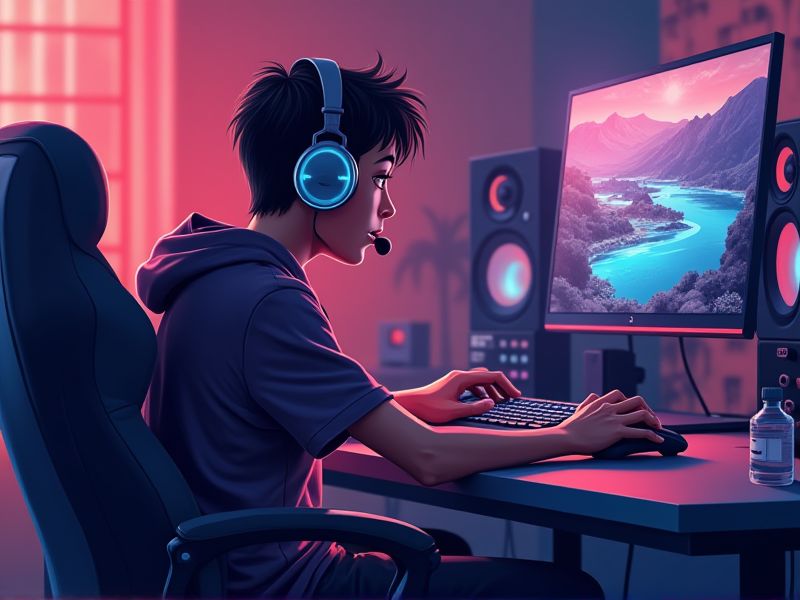
Kobe Bryant's approach to mastering skills can be applied to improving at shooting games. He emphasized the importance of focus and dedication, stating, "I want to learn how to become the best basketball player in the world. And if I'm going to learn that, I gotta learn from the best" . This mindset can be translated to gaming by focusing on learning from top players and consistently practicing to improve skills. By breaking down gameplay into smaller details and working on them one by one, players can enhance their performance in shooting games.
How to Be Better at Shooting Games
Consistent aim training
Consistent aim training is crucial for shooting game improvement because it reinforces muscle memory and sharpens your reaction times. Studies have shown that daily practice sessions, even as short as 15 minutes, can measurably enhance accuracy and precision. Regular training routines also help stabilize your performance under pressure by ingraining instinctive target tracking and decision-making skills. By allocating focused time for aim drills, you leverage a clear cause-and-effect relationship between practice and improved in-game performance.
Optimized sensitivity settings
Optimized sensitivity settings start with finding your ideal mouse DPI and in-game slider balance, as this foundation directly correlates with your precision and reaction time. Lower sensitivity typically enhances accuracy by minimizing unnecessary hand movements, making it easier to hit small or distant targets. Gradually tweaking your settings while consistently practicing in controlled environments allows your muscle memory to adapt and improve targeting efficiency. Monitoring your performance data, like hit accuracy and reaction times, helps fine-tune your settings for optimal in-game competitiveness.
Mastering recoil control
Mastering recoil control starts with understanding your weapon's unique recoil pattern and practicing how to counteract it through gradual, deliberate adjustments. Experimenting with different sensitivity settings can reduce overcorrections, enabling a more measured response during rapid fire. Regular drills that focus on shooting in controlled bursts instead of continuous spraying can build muscle memory, leading to more precise and consistent control during gameplay. By analyzing in-game data on shot accuracy and recoil behavior, you can tailor your practice routine to address specific weaknesses, resulting in a marked improvement in your overall shooting performance.
Analyzing game maps
Analyzing game maps is key to unlocking consistent tactical advantages in shooting games. Breaking down a map into key zones like cover spots, chokepoints, and high-traffic enemy areas allows you to predict opponent behavior and improve positioning. By studying these crucial areas, you can create strategies that minimize engagement risks and maximize your opportunities for aggressive plays. In essence, systematic map analysis not only deepens your understanding of game dynamics but also sharpens your reactive and anticipatory skills during intense matches.
Enhanced situational awareness
Enhanced situational awareness in shooting games starts with actively scanning the environment; this means keeping an eye on both the minimap and the in-game details to spot potential threats early. Recognizing enemy positions and possible ambush risks allows you to anticipate actions and plan effective counter-strategies. This heightened awareness translates into improved decision-making, where each movement and shot is informed by the surrounding context. Practicing regular in-game drills that focus on tracking multiple targets can further cement these skills, ensuring quicker responses and more strategic gameplay.
Strategic positioning
Strategic positioning in shooting games is all about leveraging the map environment to gain both offensive and defensive advantages. Choosing elevated spots and staying near cover not only helps you keep an eye on enemy movements but also minimizes your exposure. Continuously reposition throughout a match prevents opponents from predicting your location and applying pressure. Combining deep map knowledge with learned enemy behaviors ultimately leads to more informed decisions and improved overall gameplay.
Effective communication
Effective communication in shooting games fosters quick strategic adjustments that directly enhance team performance. Clear callouts and concise in-game instructions prevent missteps, ensuring that all team members react cohesively. Coordinating tactics and sharing enemy positions in real time minimizes delays and boosts overall efficiency. This streamlined communication not only improves gameplay outcomes but also builds trust within the team, further elevating your effectiveness in competitive environments.
Quick reaction skills
Focusing on improving quick reaction skills requires targeted training and deliberate practice. Reaction time drills that simulate in-game scenarios can enhance both reflex speed and accuracy, directly influencing performance outcomes. Data from competitive gaming shows that players who consistently engage in these exercises tend to execute faster decisions and more precise movements. Prioritizing rapid response training ultimately increases situational awareness and provides a strategic edge during intense gameplay situations.
Adaptable playstyle
Being adaptable means constantly shifting your tactics to counter your opponents' unpredictable moves and game dynamics. Refining your playstyle involves analyzing what works best in different scenarios, whether it's changing positioning or swapping weapons on the fly. Tracking your performance data lets you pinpoint areas for improvement and adjust your strategies accordingly. Over time, this flexible approach evolves your skills and boosts your overall performance in shooting games.
Regular gameplay analysis
Regular gameplay analysis allows you to identify specific habits and patterns that directly impact your performance in shooting games. By reviewing detailed session replays and performance data, you can pinpoint when and why you miss crucial shots, allowing for targeted improvements. Consistent analysis helps reveal the correlation between your in-game positioning, decision-making, and overall success rate. Reviewing metrics such as reaction times and accuracy over time not only documents progress but also informs strategic adjustments to your gameplay style.
Summary
Consistent aim training builds muscle memory and improves target acquisition under pressure. Optimized sensitivity settings allow for precise movements tailored to individual playstyles and faster reaction times. Mastering recoil control enhances the ability to manage weapon behavior and maintain accuracy during sustained fire. Together, these strategies create a data-driven approach that significantly refines overall shooting performance.
